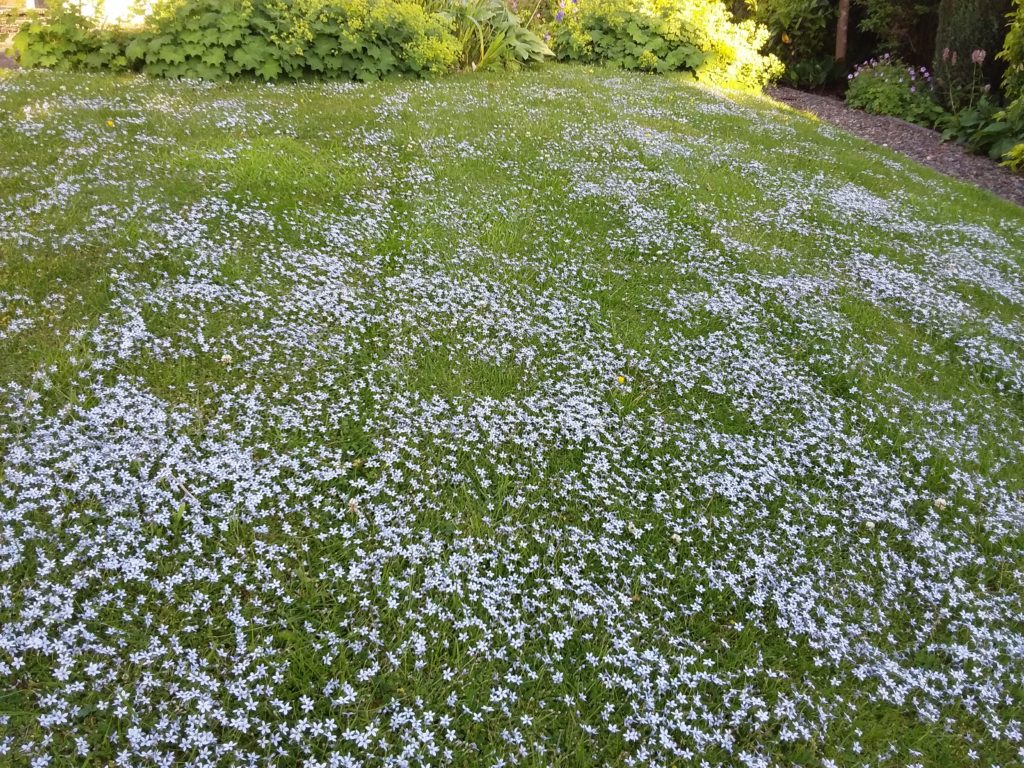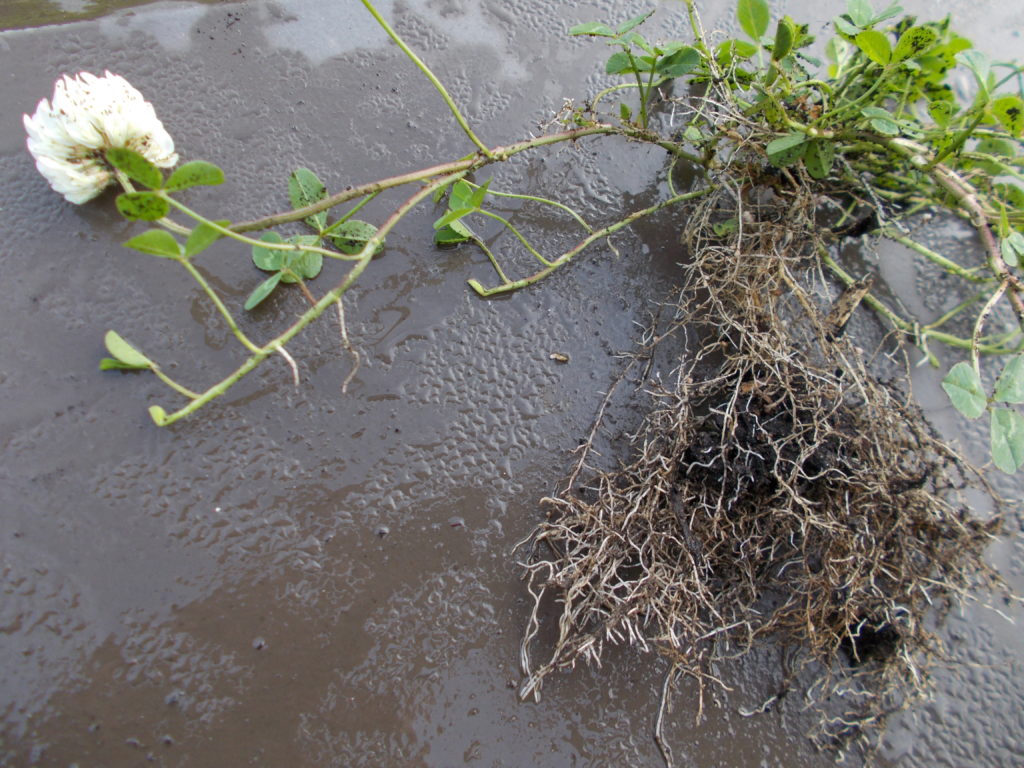The lawn is a wonderful thing; a living surface that acts as a foil to the plant collection. It serves as a meeting place for family gatherings and effectively fuses all aspects of a garden together.
It is however not as it seems from a casual glance. It is made up of a combination of broadleaf and turf grass species. The grass often outcompeted by the “weed” species. These weed species arrive through effective seed dispersal and transportation. Seed or small vegetative propagules on the sole of your shoe having been picked up some distance away, lodged in the tread and subsequently deposited on the surface of your lawn. Bird droppings are another prime way that the lawn becomes “weedy”. Or simply windblown seed landing on a worm cast and germinating when conditions are right.
A Daisy strewn lawn is a joy to appreciate. Another visual classic is the small leaved, light blue flowered Pratia angulata ‘Treadwellii’. In this image a carpet of flower results from a rotary mower moving across the lawn in a parallel motion successfully propagating slices of stem. These are thrown out of the discharge chute falling on a damp lawn. Roots develop and grow down into the layer of moist thatch. As an example of how values are placed on the same item in a different context this plant can be bought in a 9cm pot for £4.00 at nurseries.

Other lawn weeds have deep and delving root systems. Take a look at the images of Trifolium repens “White Clover” and Medicago. Both have extensive root systems. Able to source soil moisture from greater depths than turf grass. An added advantage are the nitrogen fixing nodules on the roots. These enable the “weeds” to give a green appearance to the lawn during times of summer water stress. The multitude of small leaves are able to withstand some trampling and activity from ball games.
Are weeds in turf a problem? On high quality sports pitches they are, as large leaved lawn weeds such as Plantago major “Plantago” and Bellis perennis “Daisy” are easily worn out by foot pressure, especially when the pressure is exerted by the foot in a twisting action. This often occurs in football, rugby, hockey games as the players make turns. For this reason sports pitches are a monoculture of grass species as once the broadleaved rosette is worn out a patch of soil is exposed. Soil on a wet pitch turns to mud and as every parent knows: Mud breeds mud. Leading to poor playing conditions.
Some of the finer leaved turf grass species Agrostis stolonifera “Creeping Bent Grass” and A. capillaris “Browntop Bent Grass” have in excess of 400 shoots per 100cm2. This enables the turf to withstand games of sport where a single rosette of Plantago may cover 10cm2. Gradually the rosette increases in circumference blotting out light to the grass beneath causing it to lose all chlorophyll and die. Inevitably one plant is able to be a very successful lawn weed.

Many lawn weeds will grow, flower and set seed below the height of cut that a mower is set at. This gives rise to the maxim; one years seed = seven years weeds. Rapidly a seed bank builds up in the soil/thatch layer and when conditions are suitable seed will germinate and grow to increase the biodiversity of the sward. Not a bad thing for a garden lawn when an even green sward of mixed composition will suffice. Indeed with the current interest in meadows such lawns will gain critical acclaim; but unacceptable for a sports pitch.

Site Editor
I’m all for biodiversity but I’d like a management strategy to keep the proportion of grass to “weeds” above about 50% in our shared garden lawn. At some point the word lawn becomes a misnomer!